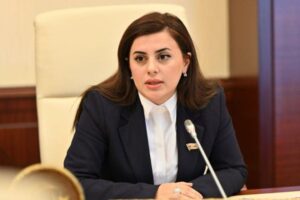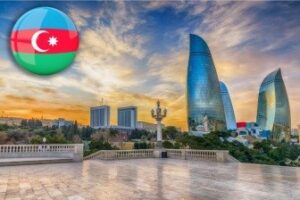Seven Great Sufis of Bukhara – An Overview

Bukhara is the birthplace of the seven great Sufis of the Naqshbandi Brotherhood. Great representatives of Sufism lived, led religious and social life here, who contributed to the formation and prosperity of Blessed Bukhara, the upbringing of spirituality, and raising the emotional spirit. Pirs are preserved here – Muslim sanctuaries, burial places of holy Sufis.
Khoja Abdalkhalik al Gijduvani
Most of the pilgrims of Bukhara begin their journey with a blessed visit to the Mausoleum of Khoja Abdalkhalik al Gijduvani , a spiritual mentor who paved the path for the teachings of Nakshbandi. Abdalkhalik al Gijduvani is connected by the spiritual links of the tenth generation of the prophet. The iwan of the mausoleum with ten columns and supports is the symbol of the mentioned dynasty.
During the time of Khoja Abdalkhalik al Gijduvani, the mausoleum was a chillakhona, where people came to pray during the forty-day sweltering heat. The holy place of supplication then becomes a cherished place of worship.
In the recent past, the shrine was abandoned. In order for the mausoleum to acquire today’s exemplary appearance, several generations had to go through. Now ” Mausoleum of Abdalkhalik al Gijduvani ” as part of the Ancient East, is the connection between earth and sky.
Murshid Haji Arif Rivgariy
Mausoleum of Khadzha Muhammad Arif ar – Rivgariy is the burial place of murshid Haji Arif Rivgariy. Born in the village of Revgar in the middle of the XII century. He was a student of the great murshid Abdulkhalik Gijduvani. After the death of a great teacher, he received permission to be a spiritual mentor for others. Until the end of his life he was active in religious activities. He liked to say dhikr aloud. There is a legend that Haji Arif lived for 150 years. He was buried in the village of Shafirkan in the Bukhara region.
Mahmud Anzhir – Fagnaviy
Mausoleum of Hajj Mahmud Anzhir – Fagnaviy – the burial place of the greatest Sufi, spiritual teacher. Born near the city of Vabkent. At the beginning of his journey, he was a craftsman and carpenter. Having passed the student’s path, he became a murshid. Mahmud Injir Fagnavi was the first to pronounce dhikr loudly, believing that “sleepers should wake up.” He was buried in his native village Anzhirbog.
Khoja Ali Ramitaniy
The memorial complex of Khoja Ali Ramitaniy is the burial place of the most famous spiritual master of the Sufi school of Khadzhagan. The people called the Sufi “Azizkhon” – a venerable sheikh. Born at the end of the 12th century. in the city of Ramitan. He has been a professional weaver throughout his life. He was a student of Mahmud Fagnavi. Ali Ramitani managed the impossible – he converted the Mongols to the Islamic faith. He helped to restore scattered lands after the invasion of the Mongols, was engaged in healing. Legend has it that the Sufi was able to read people’s minds and answer the question, before it was voiced out loud. Throughout his long and righteous life, he had many disciples, among whom were his sons. He bequeathed to his younger son Khadja Ibrahim to continue his teaching.
Khoja Muhammad Bobo Samosiy
The memorial complex of Khoja Muhammad Bobo Samosiy is the burial place of the famous Sufi, a follower of Haji Ali Ramitani. Hajja Sammasi made an invaluable contribution to the development of Sufism, predicted the birth of a great personality, the creator of Bahautdin Muhammad Naqshbandi. The legend says that once passing by the native village of Bahautdin Kasri-Hinduvan, the mystic lit up. He said that the greatest son of Sufism and enlightenment would be born in this place, and the place would be called “The Village of the Enlightened”.
The teacher died at the age of 95 in 1354. The holy burial is located in the village of Simas, Romitan region. A mausoleum, a mosque, a well and a beautiful garden were erected here – everything that this non-trivial person personified with his teachings.
Sayyid Amir Kulal Bukhari
The memorial complex of Hajj Sayyid Amir Kulal Bukhari is the burial place of Sayyid Amir Kulal. Already during his lifetime he had the nickname Kalon, which means “Great”. Professionally engaged in pottery. Glory overtook him long before becoming a great teacher. He was a famous talented potter.
Sayyid Amir Kulal was a spiritual authority, had more than a hundred followers, among whom was Bahautdin Muhammad Naqshbandi. He introduced Naqshbandi to the basics of Sufism, the correct reading of dhikr, and the traditions of the mystical path of Hajagan. There is an opinion that the teacher was introduced to the Great disciple by Sheikh Hajja Sammasi, who already then understood that he trusted the most valuable and dear spiritual son. Sayyid Amir Kulal was buried in 1370 in his native village of Sukhar.
Bahautdin Nakshbandi
The complex of Bahautdin Nakshbandi ( XVI century ) is a unique memorial complex located 12 km. from Bukhara. The complex was built in honor of the cult “Teacher of Sufism” Bahautdin Nakshbandi.
There is a museum at the “Bakhautdin Nakshbandi” complex, which presents interesting exhibits and information related to the life and work of this amazing person.


